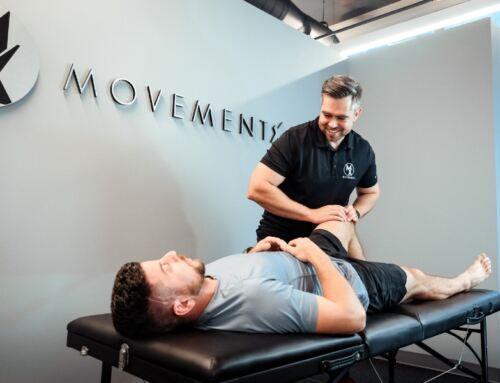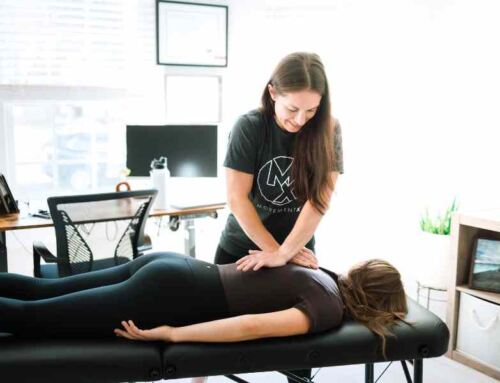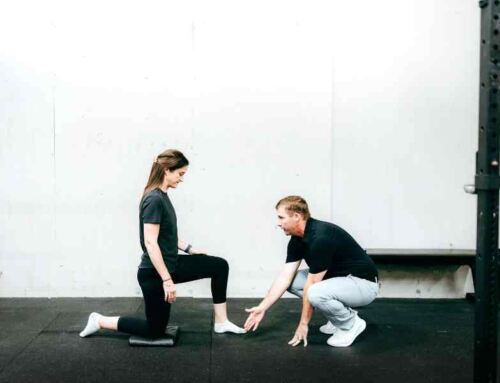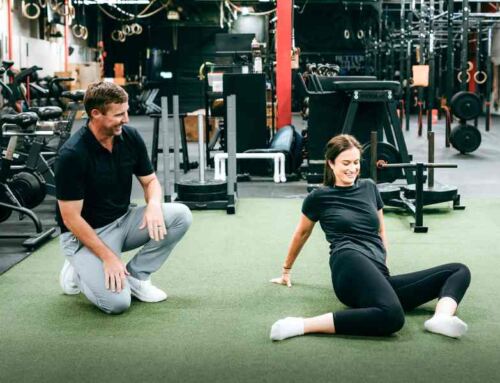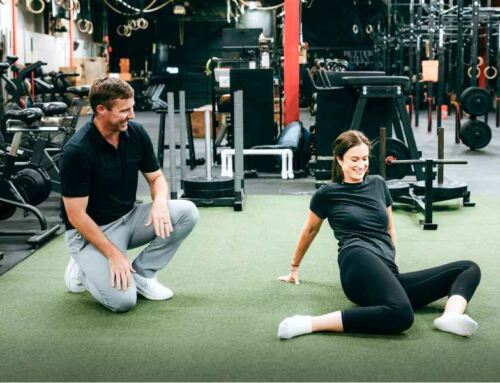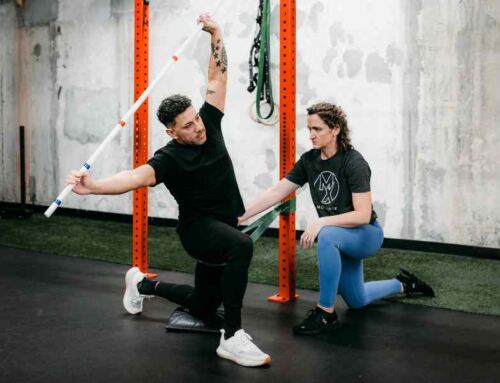If you play pickleball, you already know how much fun (and addictive!) the game can be. But you might also notice that after a few long rallies, your knees ache, your back feels tight, or you’re just a step slower getting to the kitchen line.
As a physical therapist, I see this all the time, players who love the game but feel limited by nagging aches or poor mobility. The good news? You can improve how your body moves and how you play through something called movement screening and performance training.
What Is a Movement Screen?
Think of a movement screen as a “tune-up” for your body. Just like a mechanic checks a car before a race, a PT looks at how well your body moves before pushing it harder on the court.
During a screen, we test things like:
- Flexibility and mobility – how well your joints and muscles move
- Balance and control – can you stay stable on one leg?
- Strength and coordination – do your muscles fire in the right order?
- Agility and reaction – how well can you change direction quickly?
These simple tests help identify any “weak links” that could limit your game or increase your injury risk.
Research shows that players with better hip strength and faster change-of-direction times are less likely to fall on the court and typically play more efficiently [1].
Why This Matters for Pickleball
Pickleball demands quick reactions, side-to-side shuffles, lunges, rotations, and fast bursts of movement. If one area of your body isn’t doing its job, say, stiff ankles or weak hips, something else has to compensate. That’s when pain or poor performance sneaks in.
A movement screen can uncover these issues before they become bigger problems, allowing you to train in a way that addresses the root cause rather than just symptoms.
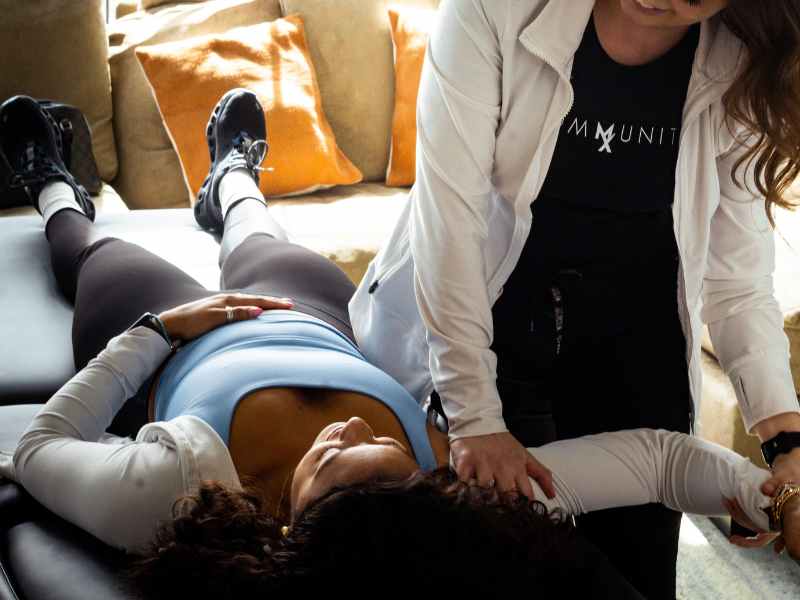
From Screening to Performance Training
After a movement screen, the next step is a personalized performance program to fix the weak links.
The approach usually looks like this:
- Find the root cause – Maybe your shoulder tightness is coming from poor thoracic rotation or weak core control.
- Train the basics first – Start with simple drills to improve movement quality and muscle control.
- Build strength and power – Add resistance and more dynamic drills once movement quality improves.
- Make it sport-specific – The final step is translating those gains into pickleball movements.
For example:
- If your single-leg balance is poor, start with stability drills, progress to single-leg squats or hops, then move to reactive shuffle drills.
- If your core rotation is limited, begin with anti-rotation holds (like a Pallof press), then progress to medicine ball throws and paddle swings with resistance bands.
Over time, these exercises help you hit harder, move faster, and recover more efficiently after games.
How Performance Training Improves Pickleball Play
Here’s what players often notice after just a few weeks:
✅ Better balance when lunging for a shot
✅ Quicker reactions to the ball
✅ Smoother transitions from baseline to net
✅ Less soreness after long matches
✅ More confidence moving in every direction
It’s not just about injury prevention, it’s about playing your best game and staying on the court longer.
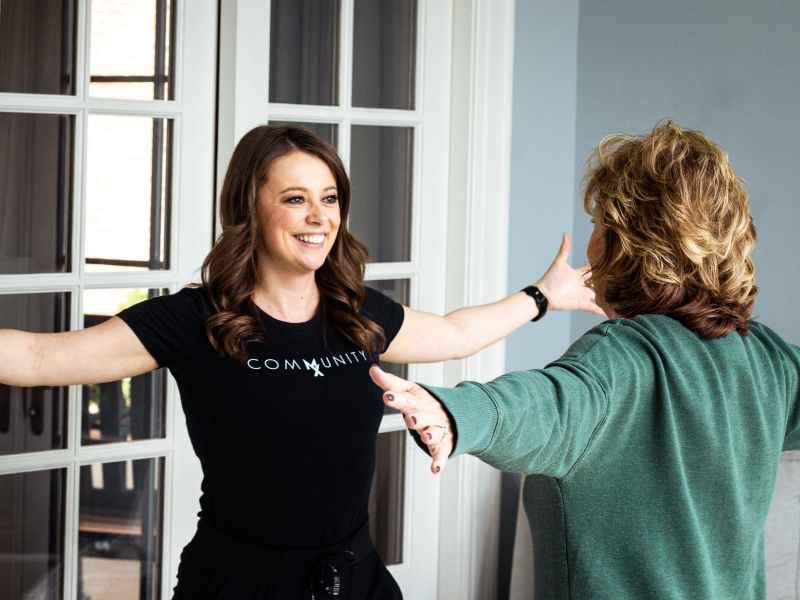
Research Backs It Up
While pickleball-specific research is still growing, studies in other sports show that targeted movement and performance training can:
- Improve movement quality and flexibility [2-4]
- Enhance agility and coordination [5]
- Reduce injury risk and improve balance [6]
In short: when you move better, you perform better.
Key Takeaways
- Get screened: A movement screen helps you understand how your body moves and where you can improve.
- Train smarter: Focus your workouts on balance, strength, and mobility that translate directly to the court.
- Stay consistent: Small, regular improvements compound into major results over time.
- Work with a PT: A physical therapist can tailor a plan to your body and your pickleball goals.
If you’re serious about staying healthy and improving your game, ask your local PT or sports performance specialist about doing a Pickleball Movement Screen. It could be the difference between getting frustrated on the court and playing your best, pain-free pickleball season yet.
References
- Myers B, Hanks J. Hip Strength, Change of Direction, and Falls in Recreational Pickleball Players. Int J Sports Phys Ther. 2024;19(9):1116-1125. Published 2024 Sep 1. doi:10.26603/001c.122490
- Cook G, Burton L, Hoogenboom BJ, Voight M. Functional movement screening: the use of fundamental movements as an assessment of function – part 1. Int J Sports Phys Ther. 2014;9(3):396-409.
- Clark SC, Rowe ND, Adnan M, Brown SM, Mulcahey MK. Effective Interventions for Improving Functional Movement Screen Scores Among “High-Risk” Athletes: A Systematic Review. Int J Sports Phys Ther. 2022;17(2):131-138. Published 2022 Feb 1. doi:10.26603/001c.31001
- Kiesel K, Plisky PJ, Voight ML. Can Serious Injury in Professional Football be Predicted by a Preseason Functional Movement Screen?. N Am J Sports Phys Ther. 2007;2(3):147-158.
- Eckart AC, Ghimire PS, Stavitz J, Barry S. Predictive Utility of the Functional Movement Screen and Y-Balance Test: Current Evidence and Future Directions. Sports (Basel). 2025;13(2):46. Published 2025 Feb 8. doi:10.3390/sports13020046
- Alexe DI, Čaušević D, Čović N, et al. The Relationship between Functional Movement Quality and Speed, Agility, and Jump Performance in Elite Female Youth Football Players. Sports (Basel). 2024;12(8):214. Published 2024 Aug 6. doi:10.3390/sports12080214
About the Author
Taylor Morgan, PT, DPT is a physical therapist based in Knoxville, TN. She specializes in treating a wide range of orthopedic and neurological conditions, including post-operative care, chronic pain, Ehlers-Danos Syndrome, hypermobility, balance and vestibular disorders, and stroke recovery. With a passion for treating the whole person, Taylor partners with her patients on their healing journey, empowering them with knowledge and tools to take control of their health and well-being.



